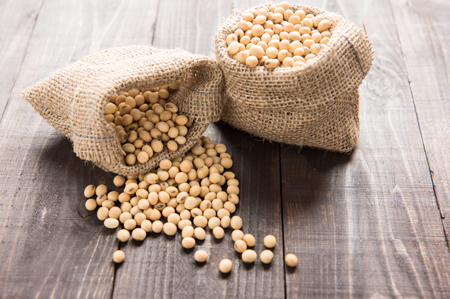Soybean, Corn Futures Lower in Overnight Trading; Crop Prices Likely To Stay Subdued in 2017
 (Agriculture.com) – SOYBEANS, CORN LOWER AS INVESTORS FOCUS ON SOUTH AMERICAN RAIN
(Agriculture.com) – SOYBEANS, CORN LOWER AS INVESTORS FOCUS ON SOUTH AMERICAN RAIN
Soybeans and corn were lower overnight as prices continued to fluctuate day after day in the week before the Christmas holiday.
Investors have been more bearish as of late, reducing the number of net-long positions, or bets on higher prices, in soybeans while increasing the number of net-longs, or bets on lower prices, in corn, according to the Commodity Futures Trading Commission.
Rainfall in Argentina is expected through the end of the month, boosting crops that had been suffering from dry weather. Precipitation also has been falling in Brazil. Large South American crops will boost already-sufficient global supplies.
Prices have been propped up by strong demand as sales of soybeans since the start of the marketing year on Sept. 1 are up 30% from the same timeframe last year, according to the Department of Agriculture. Corn sales have jumped almost 80% year-over-year.
Soybean futures for January delivery fell 5 ¾ cents to $10.01 a bushel on the Chicago Board of Trade. Soymeal declined 30 cents to $309.20 a short ton, and soy oil lost 0.44 cent to 35.60 cents a pound.
Corn futures for March delivery fell a penny to $3.46 ¼ a bushel in Chicago.
Wheat futures for March delivery were unchanged at $3.99 ½ a bushel overnight. Kansas City wheat was unchanged at $4.09 ¼ a bushel.
GROWERS MAY WALK THE LINE OF PROFITABILITY AS PRICES TO STAY SUBDUED IN 2017
Ag analysts and economists are expecting 2017 to be another year of subdued prices, not good news for growers who’ve had two or three years in the red.
Analysts interviewed by Successful Farming said they expect bean prices to average between $9 and $10 a bushel, corn to average about $3.25 to $3.75 a bushel and wheat from $4 to $4.50 a bushel next year.
The biggest factor in low prices is another year of oversupply. U.S. growers harvested 15.2 billion bushels of corn in 2016 on yields of 175.3 bushels an acre, both record highs. Soybean production totaled about 4.36 billion on yields of 52.5 bushels an acre, also the highest ever.
Globally, rainfall in Argentina and Brazil this month have improved crop prospects, and it’s likely overseas importers including China will turn to South American producers after they start their harvest, the analysts said. For soybeans that means demand for U.S. supplies will taper off starting in about February. Demand for corn will last longer – until May or June.
Barring any sort of black swan event, it’s likely prices will decline from current levels, though how low they can go is an unknown.
“When you consider U.S. carryout has grown and world carryout has grown, you may have a demand story to help support prices, but on the other hand, with the large inventories, you don’t have a bullish driver,” Chad Henderson, a grain and livestock market adviser at Prime Agriculture in Brookfield, Wisc., told Successful Farming.
NORTHERN PLAINS SET TO GET BLASTED BY SNOW, WIND ON CHRISTMAS DAY
The bad weather news keeps on coming for the northern Plains where a “significant” storm is expected to hit on Christmas Day.
“A strong low-pressure system will cross the Rockies Saturday night and develop rapidly over the northern Plains on Sunday,” the National Weather Service said in a report on Thursday morning. “This system will bring rain, snow and freezing precipitation to the area, along with northwesterly winds and near-zero visibility Sunday and Sunday night.”
As much as 9 inches of snow is expected to fall and winds could gust up to 70 miles an hour in northwestern South Dakota, the NWS said. The combination of snow and wind could lead to blowing and drifting snow across the state making travel impossible, the agency said.




